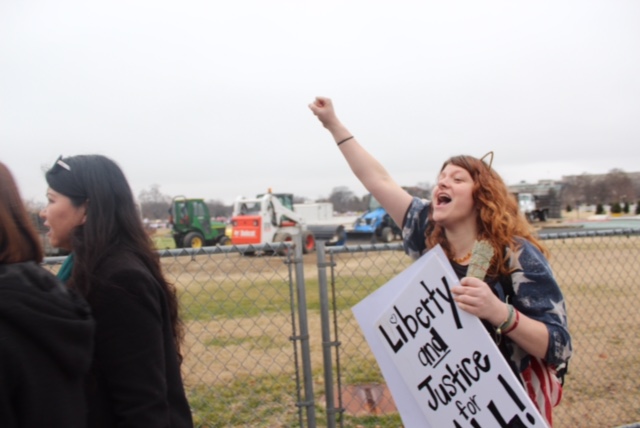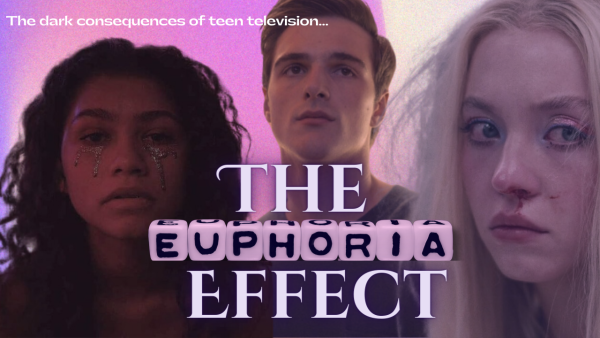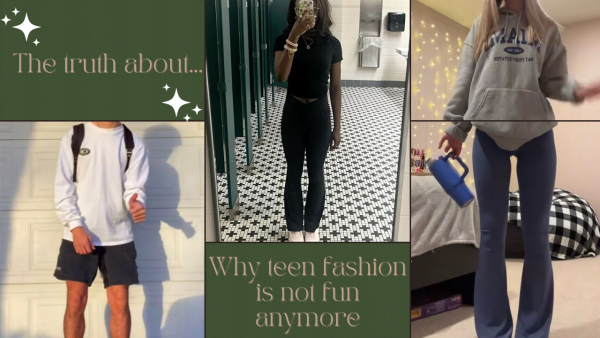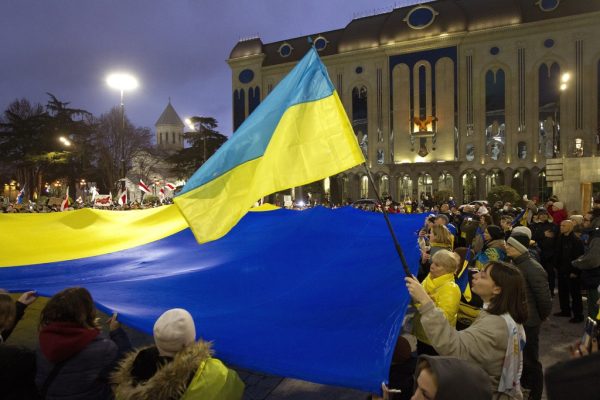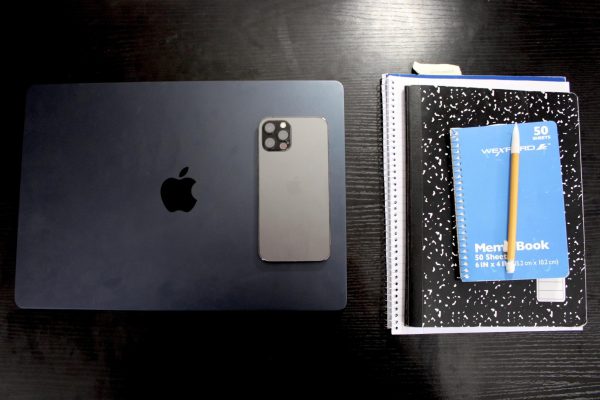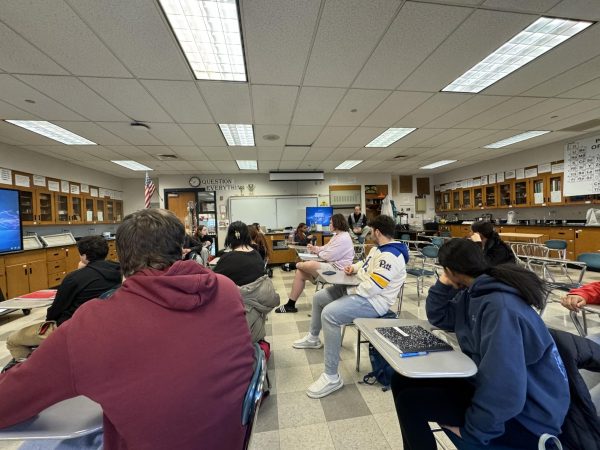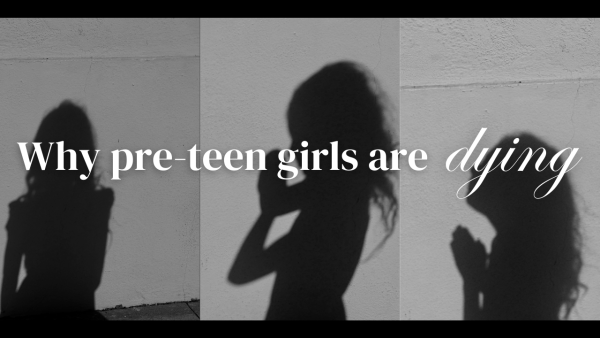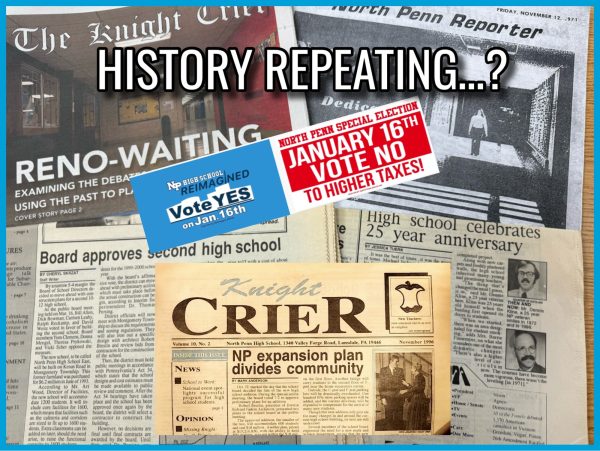Editorial: From a marcher’s perspective
On Saturday, January 21st, Staff Writer Anissa Gardizy attended the Women’s March in Washington, D.C. In this photo, she captured an excited, passionate woman at the march.
Mass media can make general assumptions about how peaceful and unifying the Women’s March on Washington was. In fact, anyone can look at the pictures or simply realize the fact that no one was arrested on Saturday. However, it takes a first hand experience to truly understand the nature of the march, so I am sharing the moments that made me realize I was a part of a history making, nonviolent demonstration along with 500,000 other amazing individuals.
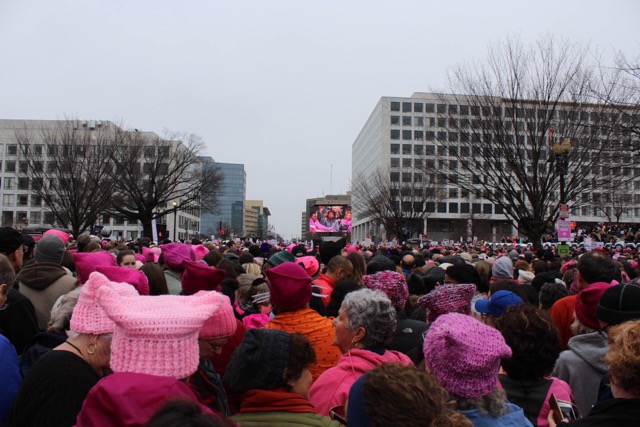
Crowd Atmosphere
To start, let me just say it was kind of crowded. And when I say kind of crowded I mean shoulder-to-shoulder standing room extended down blocks of D.C for as far as I could see. The thing that worried me the most was that I would be getting pushed and shoved around for hours on end by a raucous crowd, but that was not the case at all. It was tight, but everyone gave one another as much personal space as possible, and every few minutes you would hear an “excuse me” or “pardon me” from people trying to navigate the crowded streets. The women, men, and children who came to the march were peaceful, civil, and respectful, and they were just demanding the same qualities from their government.
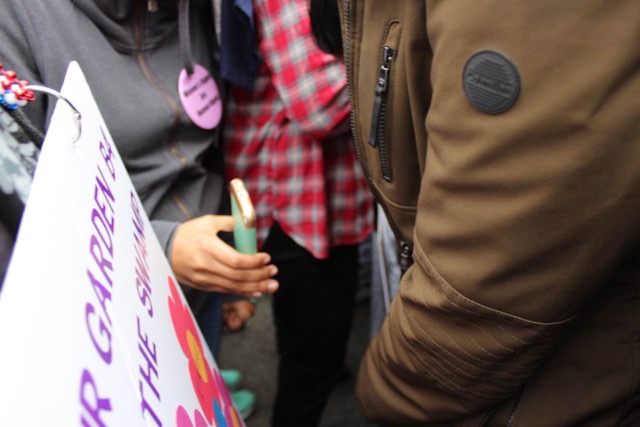
Live streaming
Before the marching even took place, there were speeches and music to serve as a rally beforehand. Since the turn out for the march exceeded the estimate by over 300,000 people, the logistics of broadcasting the entertainment to everyone were not necessarily reached. Many people could not see the jumbotron that was streaming live feed, and for some people who could see the jumbotron, the sound was not reaching everyone anyways. Because of the massive crowd, cell service was down, except for some T-Mobile users. In the areas that couldn’t hear what the speakers were saying, there were T-Mobile phone users live streaming the audio and sharing with the people around them. People who had never met where connecting through this simple, yet kind, act of generosity.
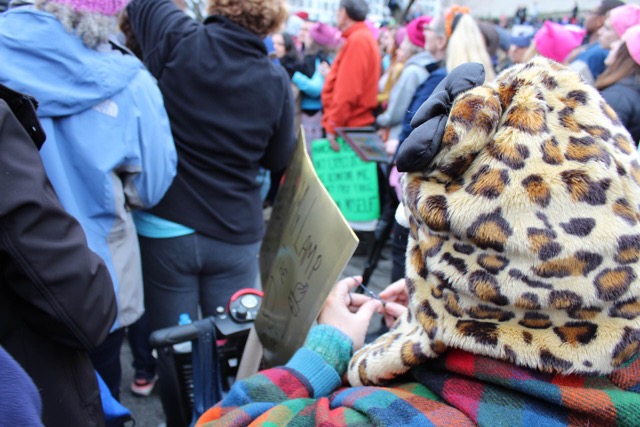
Diversity
By just looking at an aerial shot of the march, you probably couldn’t tell just how diverse the crowd actually was. White, black, brown, asian, and mixed individuals from babies to the elderly filled the streets of D.C. There were also many disabled people in the crowd that was accommodating to their needs. For example, I stood near a woman in an electric wheelchair, and the people around her made sure she had space and would inform her about what was on the jumbotron since she was too low to the ground to see over the standing crowd.
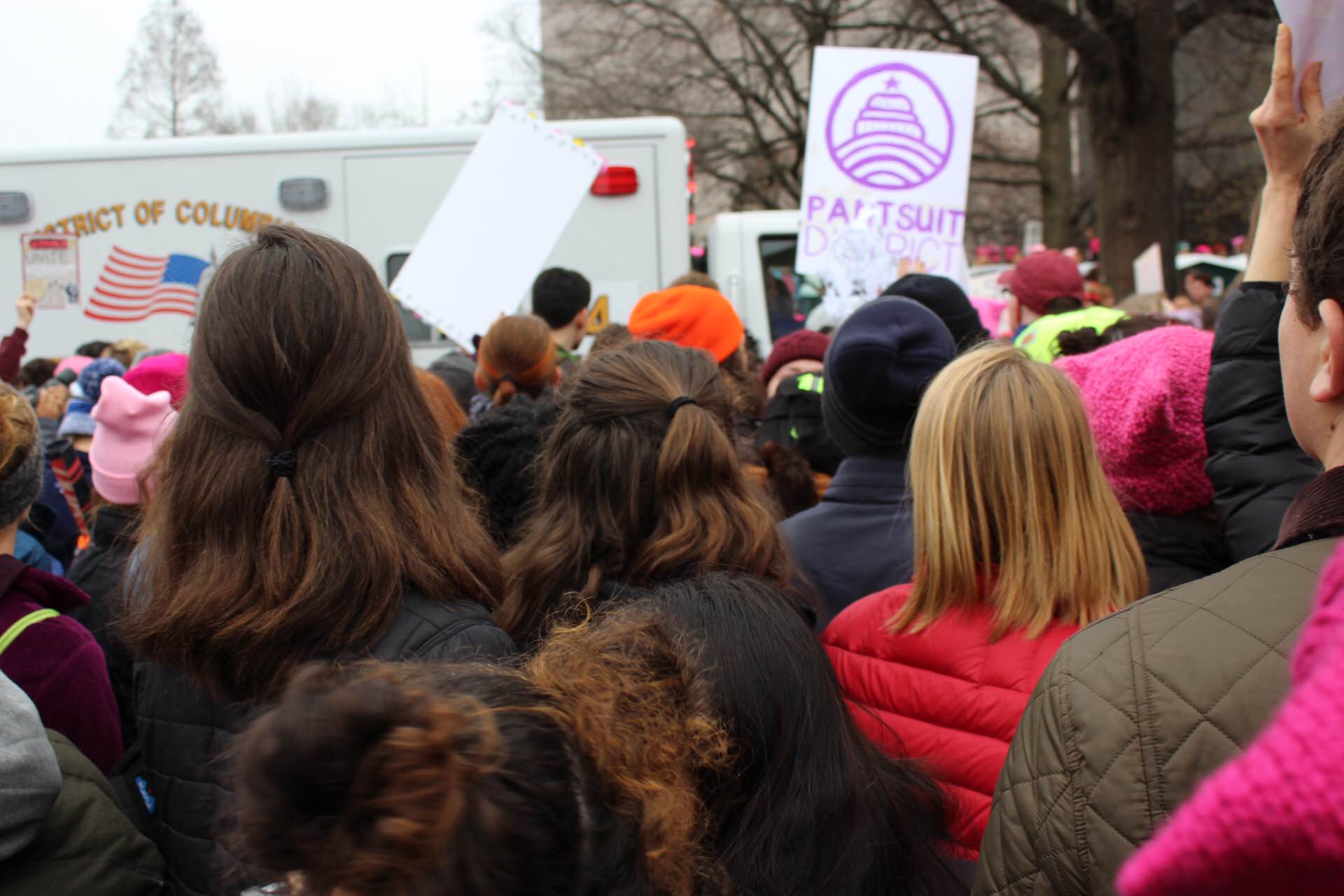
Emergency Help
As I mentioned earlier, the crowd was overwhelmingly large and there was basically no cell service…both factors that make it difficult to dial 9-1-1 in an emergency. Every so often someone would get fatigued, probably from an extended amount of time standing with nothing to eat or drink, and medical help was needed. The crowd around the victim would make it their sole mission to get the attention of emergency personnel to help the stranger around them. Chanting, “medic!” or “ambulance”, and pointing to where it was needed, the crowd used its voice to keep fellow citizens safe and get them the medical attention they needed. This sometimes resulted in an abulance literally driving into the crowd, but everyone politely made a path, and there were no issues from that perspective.
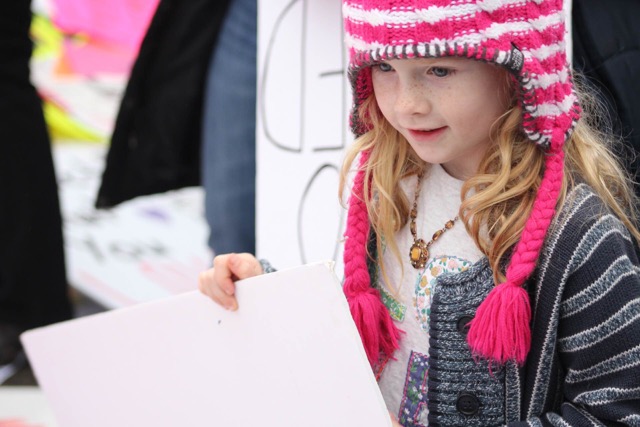
Generation gap bridged
Being that there was such a diverse group of people, it was amazing to me how united different age groups became. Some adults brought their children, who may not have fully understood why they were there, but definitely will later in life. Or take this example for instance, where a not necessarily tall, elderly woman was reaching up with her camera to take a picture of the crowd. Immediately, a tall teenager asked the woman if she wanted him to take the picture instead since he was taller. The lady graciously thanked him and asked to exchange emails so that she could share the picture, but he laughed and said it would be easier to exchange phone numbers; he then began to show her how to text a picture. This example was not a gap bridged between a short and tall person, but a gap bridged between two ends of the generation spectrum. While the younger generations were helping the older ones with technology, the older generations were answering questions like, “Who’s that speaking right now?” or “Where is the White House?” to young people who were just beginning to get involved with politics in D.C.
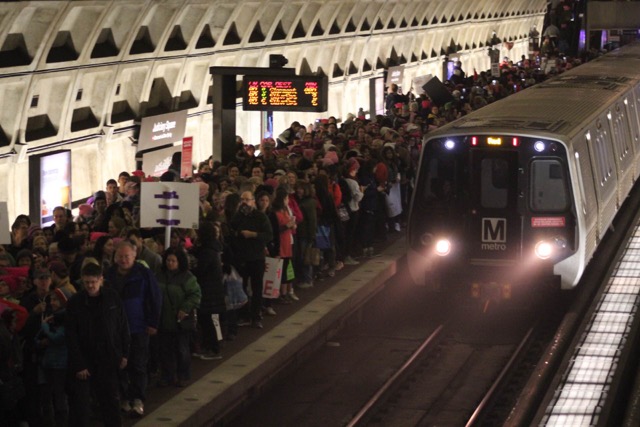
Metro rally
By now, many people have seen pictures and videos from the streets of D.C, but only few know what the march looked like from underground. Yes, underground. Beneath the streets, many marchers made their way to the start by taking the city’s Metro system, which became so crowded that it had to be shut down. Metro train cars were dropping people off by the hundreds, and people could not get out as fast as more were coming in. Despite the overflowing Metro station, there was one aspect that made the underground tunnel a great example of how energized and lively the marchers were. Every time a new Metro would pull in an open its doors, passengers were greeted by a roaring cheer from pink hatted, poster carrying marchers that welcomed them into the tunnel.
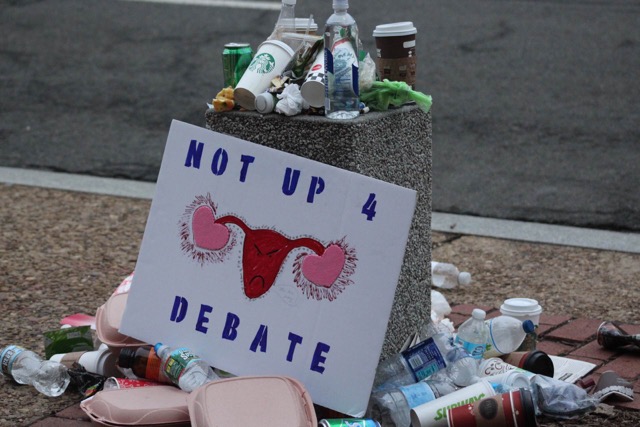
Trash
The clean up aspect of a mass event is often overlooked, but it is a big example of what kind of crowd marched on Saturday. While there were not enough trash cans to accommodate the large crowd, many people made their best efforts to keep the city clean by leaving trash around overflowing trash cans, instead of just throwing garbage on the streets (the only intentional littering happened when people left their posters outside of the White House!).
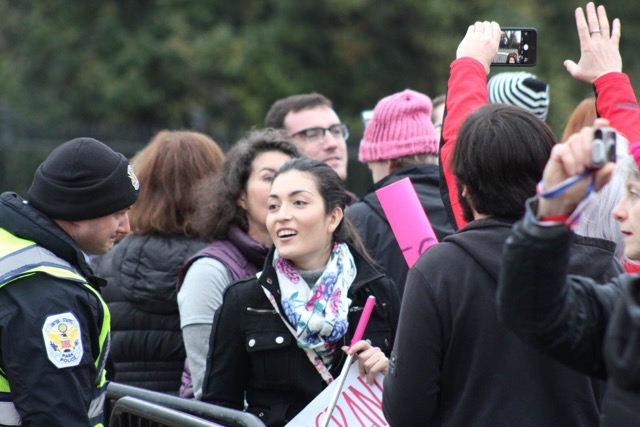
Police
Especially in this time period, relationships with police and law enforcement officials have been strained with the subject of police brutality. The group of marchers on Saturday may be wrongly labeled as “anti-police” because many oppose police brutality, but that is not a logical assumption. There was no police brutality in D.C, so there was no reason for anyone to resist the police. Actually, many people had engaging conversations with officers, who were more than willing to talk to the peaceful crowd about the march in general or help them with directions.
After my experience at the Women’s March on Washington, I am more hopeful that along with the over 1 million marchers across the nation, there is hope for the next four years.


